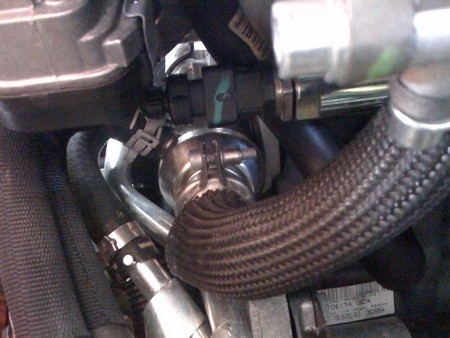The Exhaust Gas Recirculation (EGR) valve is an important part of the exhaust circulation system of a vehicle. EGR valves have been in use in the United States since the 1960s, when car companies were seeking ways to increase the efficiency of vehicles while also decreasing pollution. When the EGR valve is clogged or malfunctioning, it can cause irregularities in engine performance such as rough idling or valve knock, indicating that the EGR valve should be inspected.
The EGR valve works by routing a small amount of exhaust back into the combustion chamber. When the temperature in the combustion chamber is too high, nitrogen oxides are produced, which combine with elements in the atmosphere to form smog. Introducing a small amount of exhaust into the system reduces the temperature in the combustion chamber, reducing the amount of nitrogen oxides produced.
Many EGR valves are mechanical, and simply have a small valve which opens to allow exhaust into the combustion chamber and closes when it is not necessary, and to keep the air mixture optimal for combustion. Some mechanical versions will not open until there is sufficient back pressure, ensuring that the valve will not be open when the engine is idle or warming up and needs a higher concentration of oxygen for combustion. Electronic EGR valves are also available, and use electronics to regulate the valve.
If the EGR valve is stuck open, it will essentially cause a vacuum leak, leading to inefficient combustion, rough idling, hesitation, and sometimes stalling in extreme cases. This is because the car cannot combust on carbon dioxide from the tailpipe — it needs atmospheric oxygen. If the combustion chamber is flooded with exhaust from an open EGR valve, it will not function properly. To check and see if the EGR valve is stuck open, have someone idle a parked vehicle with the brake on while you examine the plunger shaft to see if it is stuck open.
If the EGR valve is stuck closed, emissions of nitrogen oxides will rise, and the car may start to knock. Spark knock happens when the fuel mixture in the combustion chamber ignites before it has been reached by the explosion in the cylinder, resulting in a disruption of the engine timing. In this instance, the engine should be warmed up and revved to see if the EGR valve will move.
In both cases, simple repairs are possible. The EGR valve can be clogged, and a simple cleaning of a mechanical EGR valve may solve the problem. In the case of an electrically controlled EGR valve or a more complex mechanical problem, replacement of the valve may be needed. The EGR valve is an expensive motor vehicle component, and care should be taken to ensure that it needs to be replaced rather than repaired. A reputable mechanic should advise you appropriately.
Failure to repair or replace the EGR valve will not lead to a life threatening condition, although it will reduce the life of your car and increase the potential emissions. Especially in areas which require smog testing, an automobile with a malfunctioning EGR valve may not pass.

How Can I Tell if My EGR Valve Needs to be Cleaned or Replaced?
by
Tags:

Leave a Reply